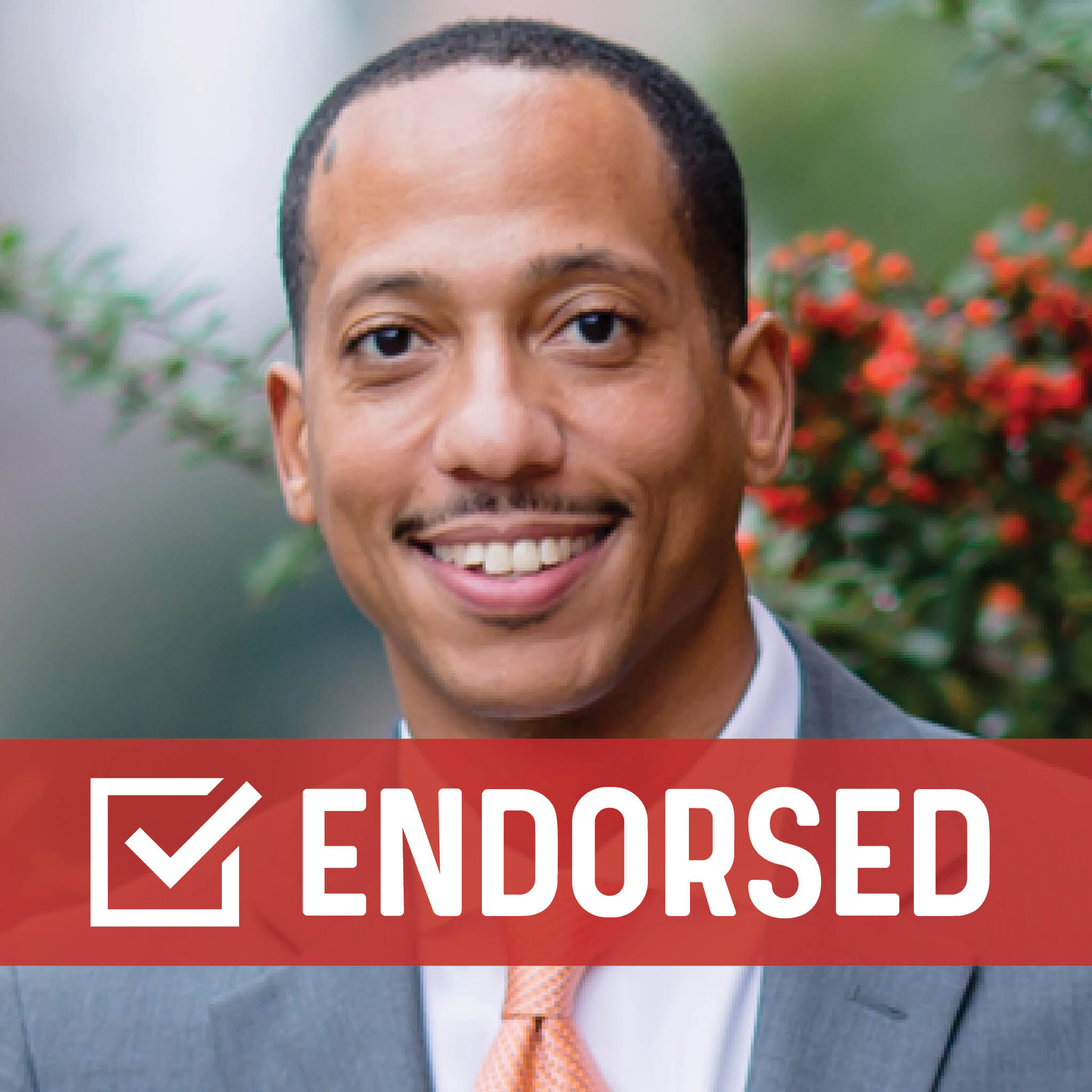John Bullock
Candidate for: City Council, 9th District
bullockforcouncil.com
Facebook | Instagram | Twitter
Describe your vision of a healthy, safe, and equitable transportation system for Baltimore city and what roles walking, biking, and public transportation play in that vision.
As a former transportation planner, I understand the important role that mass transit plays in our economy and environment. To this end, will continue my work that began before elected office in advocating for a truly multimodal comprehensive system.
To meet Baltimore City’s adopted climate goals, we must shift at least 10% of current automobile vehicle miles traveled to active transportation and public transit. What is your plan to achieve this goal?
Encouraging young people and families to utilize these options. It seems that there is a growing population that wants more pedestrian, bicycle and transit options. This desire is related to both convenience and environmental concerns.
What is your plan to continue to reduce the number of injuries and deaths on Baltimore City roadways each year?
Our city needs more traffic calming measures which include raised crosswalks, speed humps, rumble strips, bump outs, flex posts and bike lanes.
How often do you walk, bike or use public transit to reach daily destinations? If not often (or at all), what would make you more likely to use non-personal vehicle modes of transportation?
Walking is my favorite method of travel up to a mile in distance. Transit is utilized sometimes for longer trips. A more comprehensive transit system and bicycle network would make it possible for less auto use.
In 2017, Baltimore City adopted the Separated Bike Lane Network Plan Addendum to the Bike Master Plan. This called for connecting 85% of Baltimore’s neighborhoods to safe, all-ages bike infrastructure by 2022. Less than 20% of this network has been built. What would you do to accelerate implementation?
Work with the Department of Transportation in connecting with communities and securing resources in the city budget.
In 2018, Baltimore City received national recognition for passing the first equity driven Complete Streets ordinance in the country. This legislation contains a modal hierarchy prioritizing vulnerable road users and mandates best practices in roadway configuration and design. Are you committed to retaining this ordinance and the current practices and modal hierarchy it mandates?
Yes.
What is your position on The Red Line alternatives? If a surface route is selected, are you committed to ensuring the route has 100% dedicated right-of-way, even if it may require significant parking removal? Are you committed to a parallel separated bike facility, even if it may require significant parking removal as well?
This project should be built as an all-rail investment. Yes, both right of way and bicycle access are critical.
Agree or disagree?Do you support maintaining the city’s micro-mobility program that provides dockless bikes and scooters?
Yes
Would you support creation of a government subsidized bike share system?
Yes
Would you support local legislation to subsidize the purchase of e-bikes and membership for micro-mobility or bike share systems?
Yes
Are you committed to retaining every piece of separated bike infrastructure in the city that’s been built?
Yes
Cars are often longer than a single rowhome is wide. Households with multiple vehicles compete for parking in front of other neighbors’ homes. Do you support scaling residential permit parking fees to either the size of or number of vehicles in a household so those with more vehicles parked on city streets pay their fair share?
Yes
Do you support a citywide speed limit of 25mph on arterials and 20mph on neighborhood streets?
Yes
Do you support banning turns on red at all intersections that permit pedestrian crossing?
Yes
Do you support expanding automated enforcement to all roads that have high rates of crashes and speeding, not just near school zones?
Yes
Do you support legislation to create income-based traffic enforcement fine reductions or waivers locally?
Yes
Do you support allowing increased density adjacent to high-quality transit, grocery stores, Main Street districts, and in other high-amenity neighborhoods?
Yes
Do you support increasing Transit Oriented Development zoning to include all areas within a quarter mile of high-frequency bus routes and a half-mile of light rail and metro stations?
Yes
Minimum parking requirements are shown to increase housing costs while limiting potential density and making neighborhoods less walkable. Do you support removing parking minimums from new development?
Yes
Do you support removing single family residential zoning categories, so that people can choose to build and live in a variety of housing options citywide?
Yes

